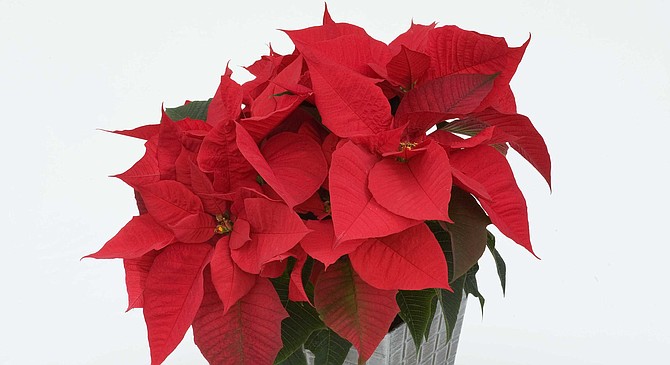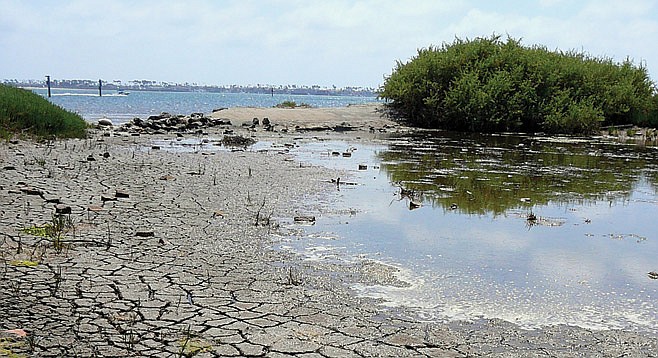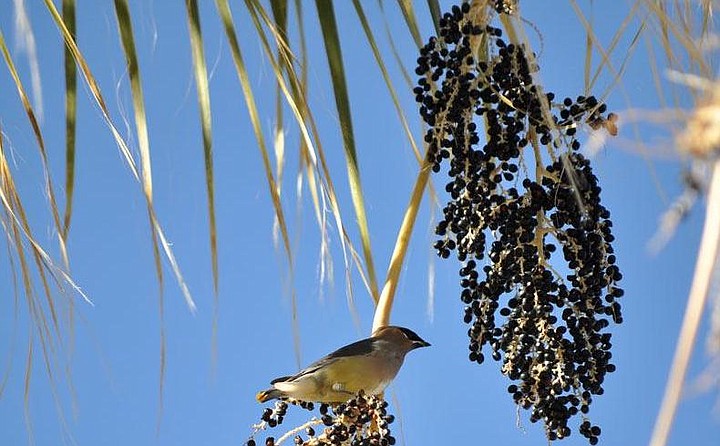 Facebook
Facebook
 X
X
 Instagram
Instagram
 TikTok
TikTok
 Youtube
Youtube

Poinsettias, a favorite of backyard gardeners, are now exhibiting their scarlet, petal-like bracts, just in time for the holidays. The onset of 14-hour-long nights triggers their behavior: In San Diego this condition is met just before the date of winter solstice — Monday, December 21.

Exceptionally High and Low Tides are set to occur on several days in mid-December. These tides approximately coincide with the winter solstice — two factors that influence tide-level extremities. On Sunday, December 13, a peak high tide of +7.5 feet occurs at 7:37 a.m. Monday’s high tide of +7.62 peaks at 8:18 a.m. Tuesday’s high tide of +7.51 feet peaks at 9:00 a.m. Wednesday’s high tide of +7.18 feet crests at 9:42 a.m. There are at least two consequences of such high tides. If any strong winter storm happens to arrive from the west during these peak tides, some flooding of low-lying coastal areas around San Diego is likely. On the brighter side, birdwatchers have an opportunity to spot species of rare shorebirds that get pushed to the edges of local bays and coastal marshes by the high water. Several exceptionally low tides will also occur within the same string of mid-December dates. On Sunday, December 13, the tide falls to -1.71 feet at 2:42 p.m. On Monday, the tide drops to -1.89 feet (almost as low as it can possibly go) at 3:28 p.m. On Tuesday, a low tide level of -1.81 feet occurs at 4:14 p.m. On Wednesday, the tides drops to -1.51 feet at 5:00 p.m. (very near the time of sunset). Any of these lowtide occasions are perfect for exploring marine life in the tidepool areas along San Diego County’s coastline.

Ripening Palm Fruit, hanging in great clusters on California’s native fan palms (Washingtonia filifera), can be seen (and tasted) this month. The black, pea-sized fruit consists of a deliciously sweet but almost paper-thin skin surrounding a hard seed. (These are not “California dates” — the fruit of cultivated palms introduced into California’s deserts from northern Africa.) Our native fan palms can be seen in their natural habitat in about two dozen canyons within Anza-Borrego Desert State Park. They have also been planted widely elsewhere in California, including along the main streets of Palm Springs.
Jupiter and Saturn tilt ever farther down in the southwest during and after twilight. Look early. Jupiter is the bright one; Saturn is upper left of it.
Jupiter and Saturn will pass just 0.1° from each other at their conjunction on December 21st, low in the sunset. That's about the width of a toothpick at arm's length. The two giants have conjunctions about every 20 years, but this will be their closest one visible in our lifetimes.
The above comes from the Outdoors listings in the Reader compiled by Jerry Schad, author of Afoot & Afield in San Diego County. Schad died in 2011. Planet information from SkyandTelescope.org.


Poinsettias, a favorite of backyard gardeners, are now exhibiting their scarlet, petal-like bracts, just in time for the holidays. The onset of 14-hour-long nights triggers their behavior: In San Diego this condition is met just before the date of winter solstice — Monday, December 21.

Exceptionally High and Low Tides are set to occur on several days in mid-December. These tides approximately coincide with the winter solstice — two factors that influence tide-level extremities. On Sunday, December 13, a peak high tide of +7.5 feet occurs at 7:37 a.m. Monday’s high tide of +7.62 peaks at 8:18 a.m. Tuesday’s high tide of +7.51 feet peaks at 9:00 a.m. Wednesday’s high tide of +7.18 feet crests at 9:42 a.m. There are at least two consequences of such high tides. If any strong winter storm happens to arrive from the west during these peak tides, some flooding of low-lying coastal areas around San Diego is likely. On the brighter side, birdwatchers have an opportunity to spot species of rare shorebirds that get pushed to the edges of local bays and coastal marshes by the high water. Several exceptionally low tides will also occur within the same string of mid-December dates. On Sunday, December 13, the tide falls to -1.71 feet at 2:42 p.m. On Monday, the tide drops to -1.89 feet (almost as low as it can possibly go) at 3:28 p.m. On Tuesday, a low tide level of -1.81 feet occurs at 4:14 p.m. On Wednesday, the tides drops to -1.51 feet at 5:00 p.m. (very near the time of sunset). Any of these lowtide occasions are perfect for exploring marine life in the tidepool areas along San Diego County’s coastline.

Ripening Palm Fruit, hanging in great clusters on California’s native fan palms (Washingtonia filifera), can be seen (and tasted) this month. The black, pea-sized fruit consists of a deliciously sweet but almost paper-thin skin surrounding a hard seed. (These are not “California dates” — the fruit of cultivated palms introduced into California’s deserts from northern Africa.) Our native fan palms can be seen in their natural habitat in about two dozen canyons within Anza-Borrego Desert State Park. They have also been planted widely elsewhere in California, including along the main streets of Palm Springs.
Jupiter and Saturn tilt ever farther down in the southwest during and after twilight. Look early. Jupiter is the bright one; Saturn is upper left of it.
Jupiter and Saturn will pass just 0.1° from each other at their conjunction on December 21st, low in the sunset. That's about the width of a toothpick at arm's length. The two giants have conjunctions about every 20 years, but this will be their closest one visible in our lifetimes.
The above comes from the Outdoors listings in the Reader compiled by Jerry Schad, author of Afoot & Afield in San Diego County. Schad died in 2011. Planet information from SkyandTelescope.org.
Comments